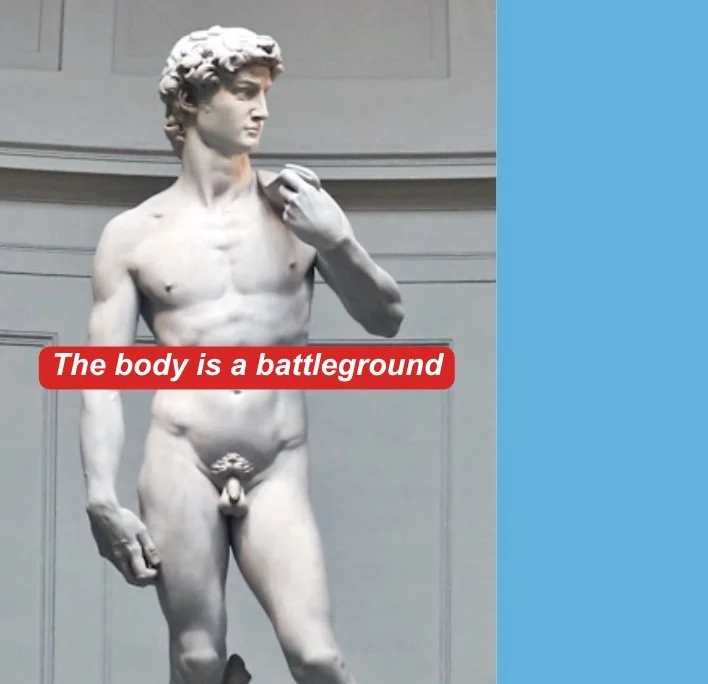Uncensor the David
A Florida middle school principal resigned recently after parents complained about their children being shown Michelangelo’s David in class, which was called “inappropriate adult content.” The statue is arguably Michelangelo’s masterpiece and a staple in Renaissance art history courses. Some parents complained, claiming the statue constitutes pornography and should not be shown to children. The school claims that the principal was asked to leave because of “the lack of follow-through on the process” of warning parents ahead of time of possibly sensitive material. This comes with the trend of parents scrutinizing school curriculum, particularly relating to the study of race, gender, and sexuality, with Florida spearheading this effort.
My immediate reaction to this was anger, mostly about how the culture war in America is impacting art and art education. Then I started to wonder what this means about the study of art and what patterns of history that may be repeating here. I consulted my art history professor who revealed his disgust and anger over the situation as well. It never crossed my mind that we would be arguing over whether or not one of the best statues ever made should be taught.
But firstly, we should discuss whether or not Michelangelo’s David is sensitive material. The main point of contention is nudity. Does the presence of nudity of the statue automatically mean it is sexually explicit? The David of the statue is the David of the Biblical story of David and Goliath, which was a common subject in Italian Renaissance and Baroque art. Does the nudity in art warrant parental consent? The focus on nudity is making it into a bigger issue than it is, in my opinion.
Here, nudity is conflated with pornography. In my experience studying Renaissance art, nudity is not the main focus of the David. It’s usually discussed in the context of the Renaissance’s obsession with anatomy and human figures. Nudity is not unique to the statue. Michelangelo demonstrates his mastery of anatomy with the David. To create a seventeen feet tall flesh-like marble statue is a great feat and a testament to human ability.
The study of the nude figure and anatomy is crucial for the creation of figurative work. It is a tradition that has lasted for thousands of years, documenting cultural norms and ideas about humans and the body. Artists look at bodies almost scientifically like doctors, trying to understand form.
This is not the first time people have tried to censor Michelangelo’s work. Some of his nude figures painted in the Sistine Chapel famously had their genitals covered after Michelangelo’s death.
I’ve been going to art museums since I was a baby in a stroller. I saw ancient Roman nude statues a young age. The David, to me, is one of the neutral, least controversial, most sanitized pieces of art that I have encountered in my studies. If the presence of a phallus (one that is not real I might add) on a statue is controversial, I don’t know what to say. The David is such an iconic figure that this was likely not the first time the students had seen it. I also believe we are not giving children enough credit in their ability to interpret Renaissance art and distinguish it from pornography.
You can’t teach the Renaissance without the David or without discussing the cultural norms of the times. The David is not the only nude statue to have ever been made.
In response to the incident, the mayor of Florence Dario Nardella invited the principal, the students, and their families to come see the David in person at the Galleria dell’Accademia in Florence. I admire this simple response. It is not defensive yet it concedes nothing about the David’s legitimacy. Nardella has the confidence that once they see the David in person, their opinions will change.
As an artist who wants to one day teach art, I felt distraught over the situation. I went to my Renaissance art history professor’s office hours in search of hope and commiseration. He said that my generation and students like me gave him hope and double-downed on the importance of focusing on the real issues at hand, not the drama of the culture wars. In a way, I think he needed to hear that as much as I did.
